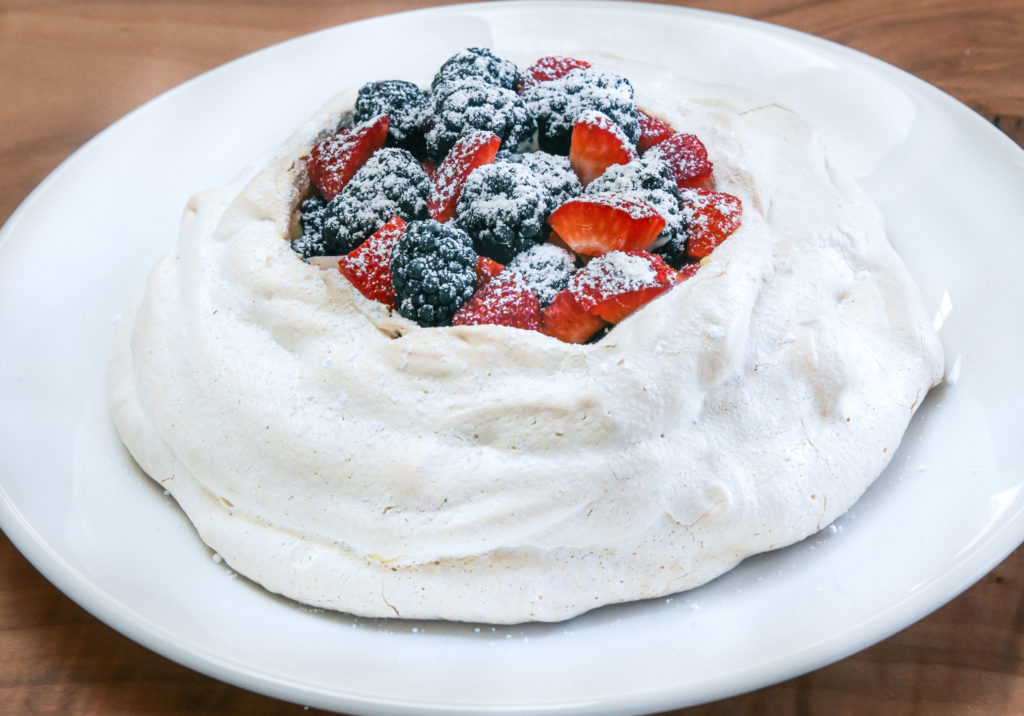
I have this thing about pavlova. I love it! This meringue-based dessert possesses a crisp exterior, slightly chewy but soft interior, and an ethereal lightness and sweetness that never disappoints. When topped with macerated fruit and whipped cream, that crisp meringue transforms into a luscious and juicy treat.
During a stay on New Zealand’s South Island I tried countless takes on this dessert. Pavlovas with fresh mango, passion fruit, or kiwi tumbled over top. Pavlovas with cooked or macerated berries or cherries cascading down the sides. Pavlovas hollowed out and filled with almond custard or vanilla créme anglaise. The variations seemed never ending.
New Zealand or Australia? The debate goes on.
For almost a century debate has raged over whether New Zealand or Australia invented the pavlova or pav, as it’s often called. Australians claim that Perth chef Herbert Sachse made the first at the Esplanade Hotel in 1935. New Zealanders point to its inclusion in a 1927, NZ cookbook. The cookbook came out a year after the dessert’s namesake, Russian ballerina Anna Pavlova, visited New Zealand. Even so, historians continue to wrangle over which country holds claim. Because I encountered far more pavlovas in New Zealand than I did in Eastern Australia, I may have to side with the Kiwis on this one.
With a nod to the various versions of pavlovas that I’ve tried and baked, here’s a slightly decadent Pavlova with Berries and Créme Anglaise. (A more traditional, quicker-to-make pavlova is featured in my latest cookbook “Luscious, Tender, Juicy.”)
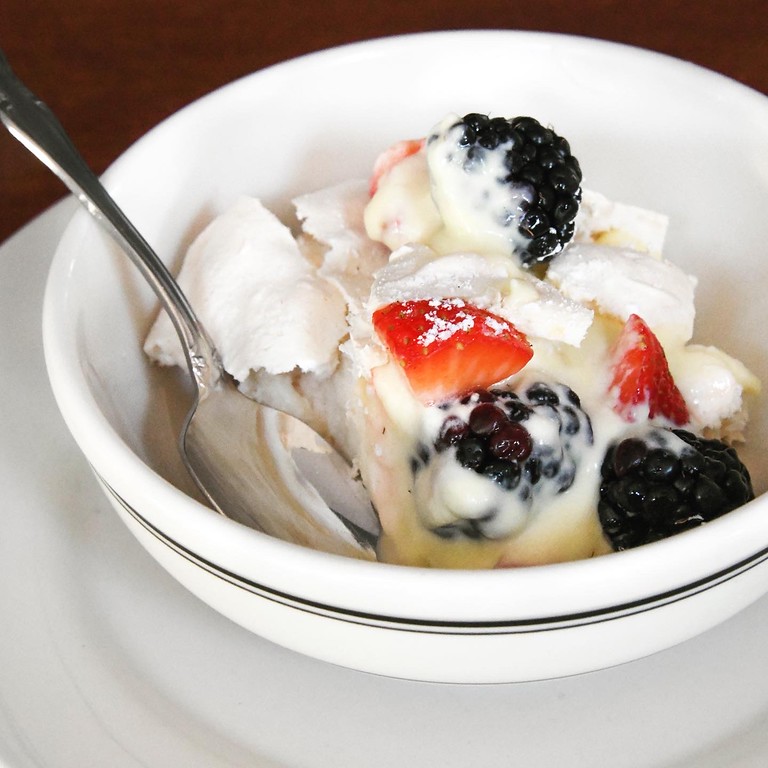
Pavlova with Berries and Crème Anglaise
Note that the addition of lemon juice helps the meringue to achieve its chewiness. So, too, does low, slow baking.
Serves 8
Ingredients
for the pavlova:
4 egg whites
3/4 cup granulated sugar
1 teaspoon vanilla extract
1/2 teaspoon lemon juice
Fresh berries, for topping
for the creme anglaise:
2 large egg yolks
1/4 cup granulated sugar
1 teaspoon almond extract
3/4 cup plus 1 tablespoon heavy cream
Pint of fresh berries, washed and dried
Confectioner’s sugar, optional, for serving
Directions
To make the pavlova:
Preheat the oven to 350 degrees Fahrenheit. Line a baking sheet with parchment paper and set aside.
Place the egg whites in a large bowl. Using an electric mixer, beat the egg whites until soft peaks form. See the photo directly below for an example of soft peaks.
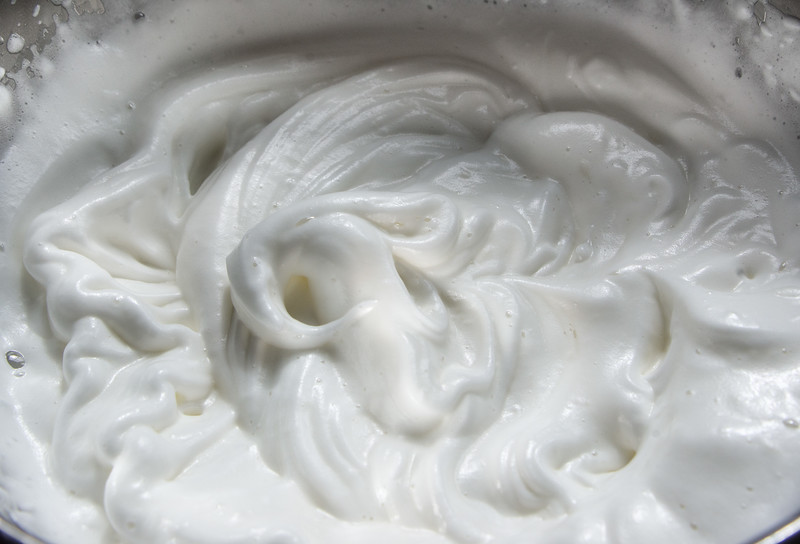
Add the vanilla extract and lemon juice and beat to incorporate. Add the sugar a spoonful at a time, continuing to beat the egg whites until stiff, glossy peaks form. See the photo below for an example of stiff, glossy peaks.
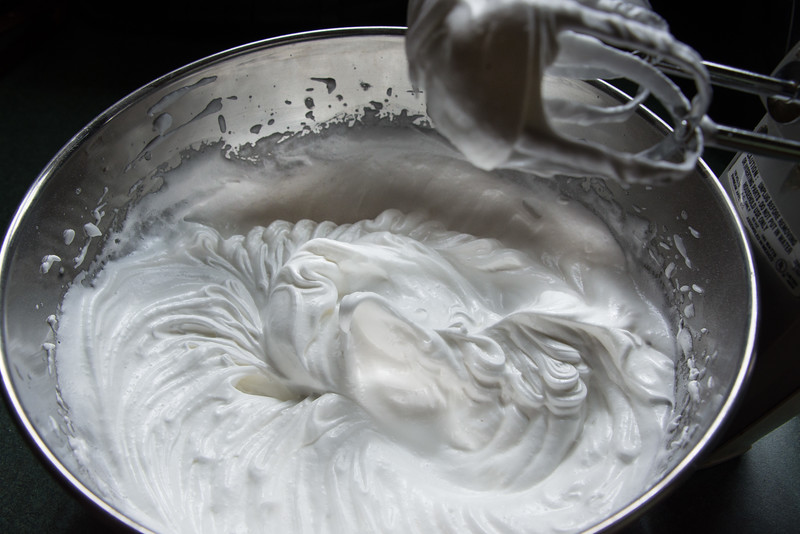
Taking a spatula, spoon the meringue onto the prepared baking sheet and shape it into an even circle, leaving a well in the center of the circle for the créme anglaise and fruit. If, like me, your circles tend to come out lopsided, feel free to recreate my small cheat and mound the meringue onto a parchment round that you’ve placed on top of the original parchment sheet. Perfect circles every time!
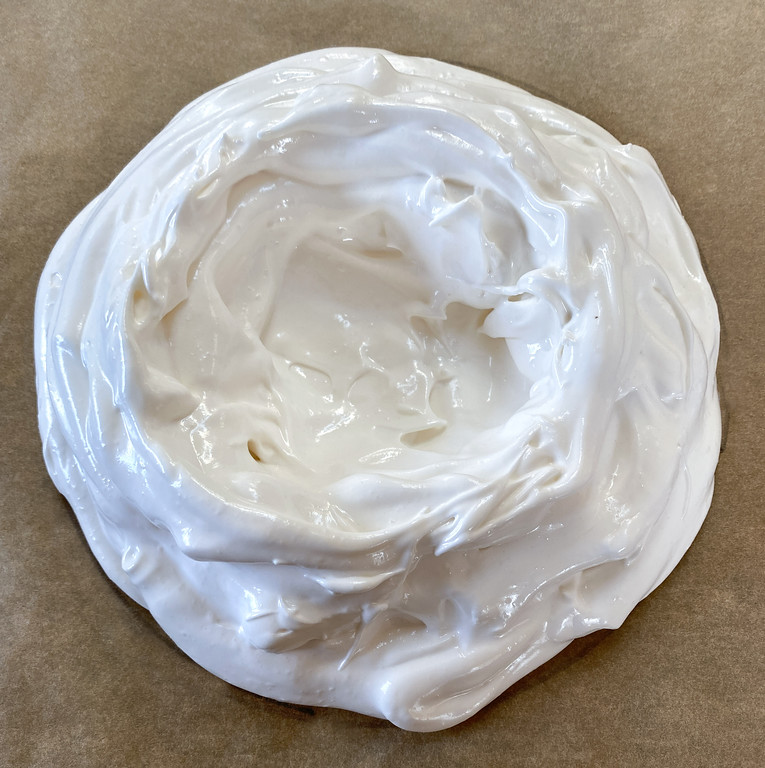
Place the baking sheet in the oven, lower the temperature to 225 degrees Fahrenheit and bake for 1 hour. After 1 hour turn off the oven and allow the meringue to cool for at least 1 hour or overnight.
To make the créme anglaise:
Use an electric hand mixer or whisk to beat the egg yolks and sugar together for 2 to 3 minutes, until the mixture has thickened and turned pale yellow.
Add the vanilla extract and whisk to combine.
In a small saucepan bring the cream to a boil. Remove the pan from the heat. Add a few drops of hot cream to the egg mixture, whisk to combine and then repeat until the egg mixture begins to warm. Slowly beat in the remaining cream.
Pour the custard into a heavy-bottomed saucepan. Stirring constantly with a spatula or wooden spoon, cook the custard over medium heat for 6 to 10 minutes. When finished, the créme anglaise will coat the back of a spoon and read 165 degrees Fahrenheit on a candy/deep-fry or digital thermometer. Remove the pan from the heat and set aside to cool.
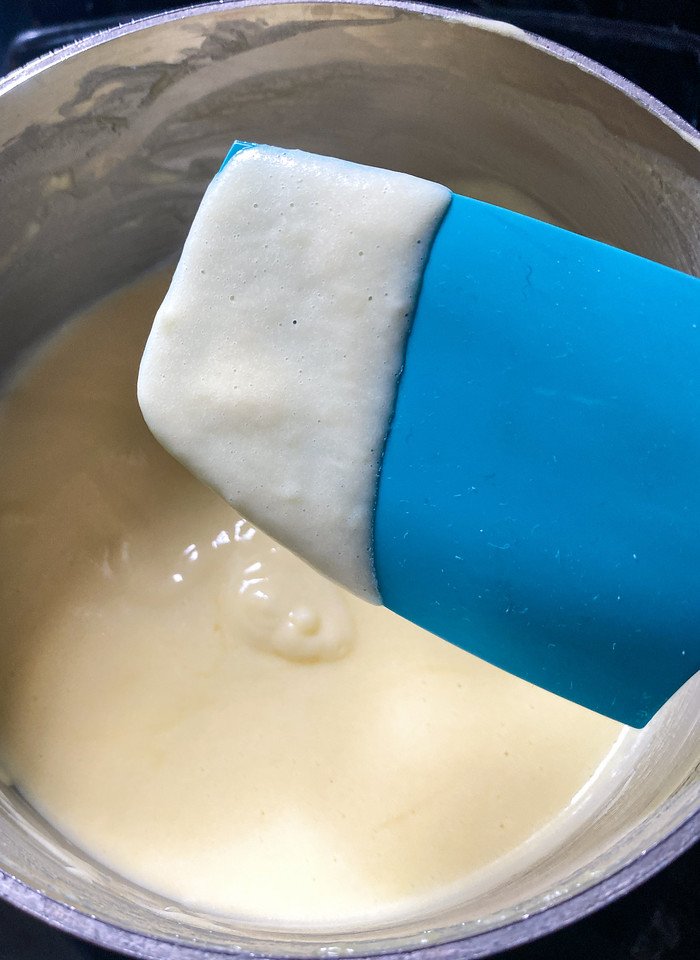
To assemble the pavlova, pour the cooled créme anglaise into the well in the center of the pavlova. Top it with the berries and optional confectioner’s sugar. Slice and serve.